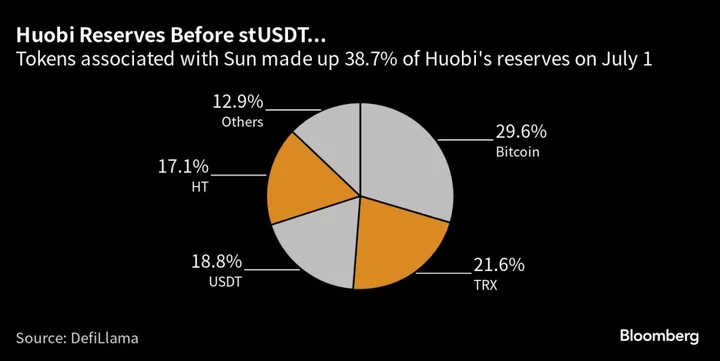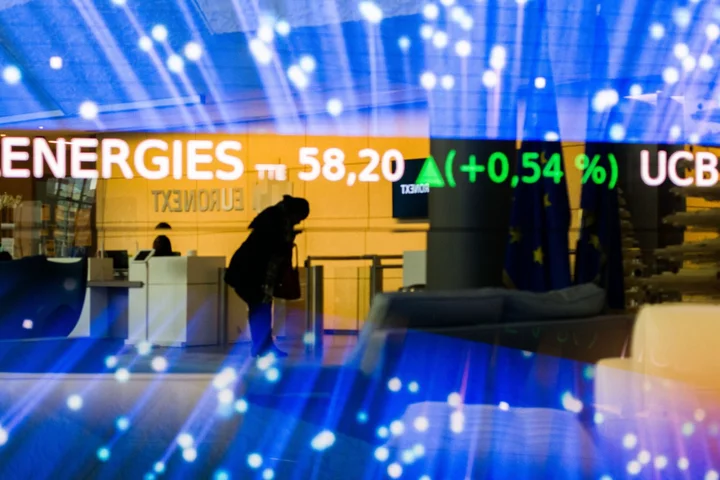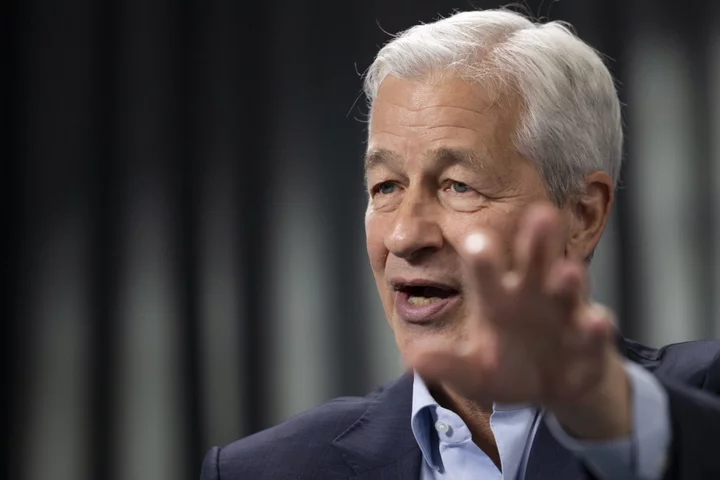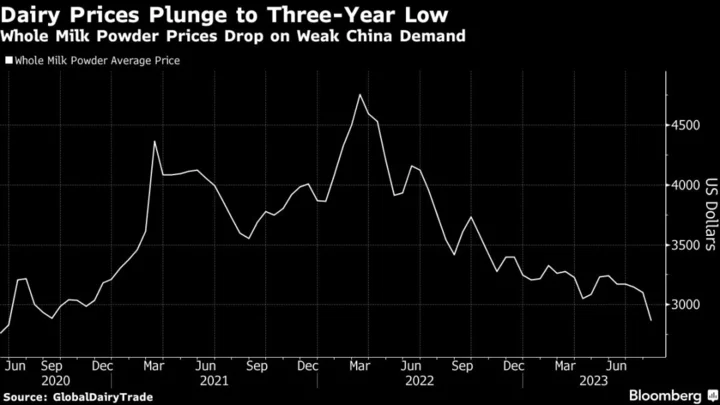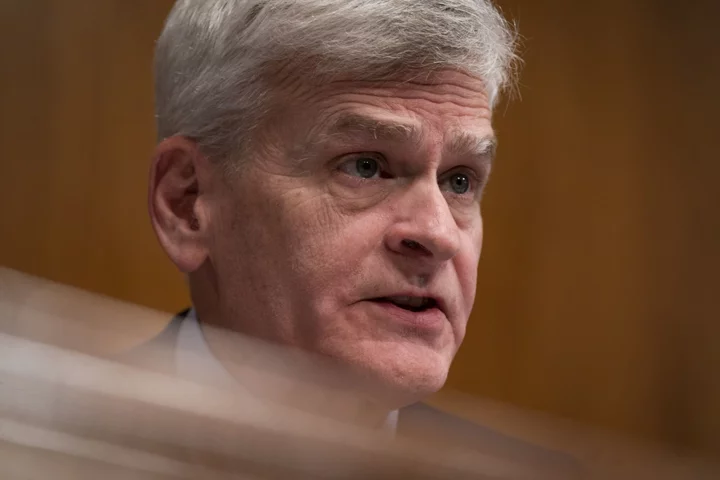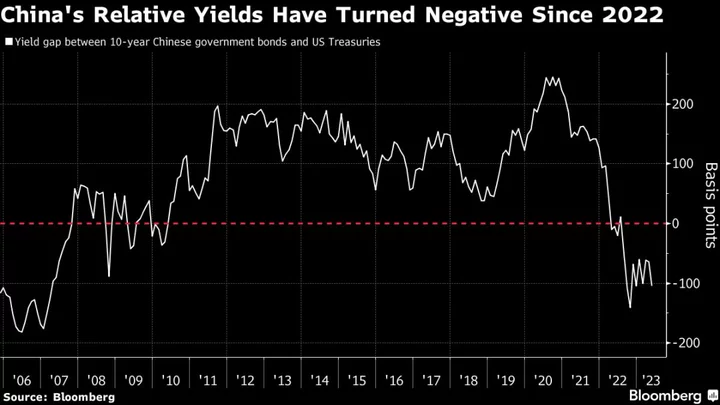Back in June, Justin Sun had a pitch for yield-hungry crypto investors: a new project that promised 5% returns tied to low-risk securities like government bonds.
By sheer numbers alone, it appears to be a big hit. In just 2 1/2 months, investments in the product — known as stUSDT — grew to $1.8 billion, a massive amount compared with similar decentralized-finance platforms. But its expansion also added a layer of risk for Huobi Global, the crypto exchange Sun runs.
Huobi is a key conduit for investing in stUSDT, and this role has contributed to changing the makeup of the exchange’s crypto reserves in ways analysts say could impair its ability to contend with sudden outflows of funds. Institutional traders have voiced concerns about the shift and have withdrawn most of their crypto holdings from the exchange since the DeFi protocol started operating in early July, a person with direct knowledge of the matter said, asking not to be named discussing private information.
Sun, at a Huobi press conference last week to unveil its rebranding to HTX, said the exchange is seeking to lessen “single-asset concentration” in its reserves and broaden them to include more tokens like Ether. Huobi didn’t respond to questions from Bloomberg News about withdrawals by institutional investors and the links between stUSDT and its assets, which at $2.8 billion are the sixth-largest among crypto exchanges.
The involvement with the stUSDT project is just one of the ways in which Sun, the serial crypto entrepreneur who launched the Tron blockchain in 2017, has put his stamp on Huobi since taking the reins almost a year ago — at times courting controversy along the way. His most visible impact may be on Huobi’s reserves, which are now heavily skewed toward tokens the 33-year-old Chinese native has been a major investor in or has other ties to.
The risks to Huobi’s financial buffers are compounded by the project’s relative lack of transparency, according to blockchain research firms ChainArgos, BlockSec and Messari.
Crypto exchange reserves became a focal point after Huobi competitor FTX unraveled in days last November, revealing a $7 billion hole in its balance sheet. Amid the turmoil FTX’s collapse unleashed, investors yanked their funds from other exchanges in case they too were unsound.
Platforms like Binance responded by publicly reporting the size and makeup of their crypto reserves, a show of transparency intended to soothe jittery traders. In effect, reserves are a snapshot of the assets an exchange holds to back what crypto traders have deposited with it at a given point in time. Highly liquid tokens like Bitcoin, Ether and Tether’s stablecoin USDT are normally the biggest components in reserves, reflecting their outsize share of overall trading.
The focus on exchange assets is where stUSDT enters the picture. The project works by exchanging investors’ Tethers for stUSDT, a token that was first created on the Sun-backed Tron blockchain in early July. Each stUSDT (short for “staked USDT”) in turn represents a claim on the government debt and other “real-world assets” the project says it invests in using the swapped Tether. It currently advertises a 4.2% yield, paid out in the namesake token.
The product is available through Huobi Earn, a platform where crypto traders seeking yield can deposit their stablecoins and choose between an array of different products. Once users have parked crypto there, Huobi says it can choose which products to invest those funds in — akin to a discretionary mandate in traditional finance. Holders of the staked Tether have the right to exchange back into the original stablecoin 1-to-1 at any time.
Some $400 million of Huobi Earn users’ funds have been converted from Tether into the staked product since the project started, data from DefiLlama and Huobi’s reserves indicate. Because Huobi’s stockpiles must reflect the changing composition of customer assets, stUSDT now accounts for about 14% of the total. It isn’t clear how much of the conversions were initiated by clients and how much was Huobi Earn doing it on their behalf.
As Huobi’s stUSDT stockpiles have grown, its Tether reserves have plunged, declining from $584 million on July 1 to $146 million, DefiLlama data show. That’s even after a $200 million infusion of the stablecoin on Aug. 8 from a crypto wallet ChainArgos and BlockSec say belongs to Sun based on transaction patterns on the blockchain. Sun has denied the wallet is his.
Falling Tether Reserves
Adjusting for that injection, Huobi’s Tether assets have fallen by almost $250 million more than can be explained by the conversions, according to Bloomberg calculations based on DefiLlama data. The stablecoin now accounts for just 5% of Huobi’s reserves, compared with around 30% at bigger rival Binance.
Overall, the value of Huobi’s assets have fallen 11% since the start of July, the data from DefiLlama show.
Huobi is the only major centralized crypto exchange so closely intertwined with a DeFi project — a potential vulnerability, according to Jonathan Reiter, chief executive of ChainArgos, which analyzes digital-asset flows.
“As long as Huobi has substantially all their USDT at stUSDT, then the exchange’s fortunes are inextricably tied to the success of stUSDT’s platform,” Reiter said. Any potential “problems at stUSDT are now synonymous with problems at Huobi.”
The project has kept growing in fits and starts, fueling speculation about who its main investors are. Late last week, the same wallet that made the Aug. 8 transfer of Tether to Huobi moved more than $860 million to stUSDT, instantly almost doubling its size. The latest infusion doesn’t impact Huobi’s reserves because it wasn’t made through the platform (investors can also access the protocol through its own website). A representative for Sun didn’t respond to a request for comment.
SEC Complaint
As for the rest of Huobi’s stockpiles, 29% are made up of TRX, the token of the Tron blockchain Sun launched in 2017. HT tokens, the native coins of the Huobi exchange, account for another 17%. In all, the three cryptocurrencies “associated with Justin Sun” make up around 60% of Huobi’s reserves, according to Jacob Joseph, an analyst at CCData, a digital-asset data provider.
The Tron token is at the center of a complaint the US Securities and Exchange Commission filed against Sun in March, accusing him of fraud and market manipulation to make the token he created appear more actively traded. He’s said the lawsuit “lacks merit.” The SEC’s allegations stem from before Sun joined Huobi and don’t relate to the company.
Sun told Bloomberg News in October last year that he owns “tens of millions” of HT tokens. His spokesperson didn’t respond to questions about whether he currently holds HT, TRX or stUSDT.
“We think that having a high share of total reserves in the exchange’s own token or related tokens could be perceived as higher exchange risk,” said Julio Moreno, head of research at CryptoQuant.
A spokesperson for Huobi said stUSDT is a separate project and not overseen by the exchange. The representative for Sun said he is “not affiliated” with the platform. Nonetheless, Sun has promoted it on X, the platform previously known as Twitter, about 40 times since late June, and at a Sept. 5 event in Seoul he said that “right now we’re building stUSDT,” without elaborating.
On Aug. 17, Huobi published a blog post describing the product and its returns. The exchange said it contributes 75 basis points as a “bonus” on top of the yield stUSDT pays.
Sun has eschewed titles since taking control of Huobi late last year, calling himself an “adviser” to the company and saying he owns no stock in it. Yet he’s injected about $200 million of his own crypto funds into the exchange this year to bolster its reserves. That figure excludes the Aug. 8 transfer Sun has said wasn’t from him.
Institutional clients like crypto funds and market makers have approached Huobi to express concerns about the dominance of stUSDT and other tokens associated with Sun in its reserves, the person familiar with the matter said. As a group, such investors have withdrawn the bulk of the digital assets they held on the exchange shortly after the staked Tether project was launched, according to the person.
The person didn’t provide the total value of the cryptocurrencies institutional clients have withdrawn. After pulling money, they now account for roughly 15% of average daily trading on Huobi, the person said.
Rising DeFi Category
The staked Tether product has also raised questions inside Huobi. Employees have asked Sun and the entity that oversees the Tron blockchain for more details on the yield-generating assets it invests in, the person familiar with the matter said. As of last week, they hadn’t received a response, the person said.
Real-world asset projects have become more popular over the past year as government bond yields surged and several centralized crypto lending companies that dangled tantalizing returns imploded. The category now has $2.4 billion of “total value locked,” according to DefiLlama.
Last week’s $865 million infusion makes stUSDT by far the biggest DeFi protocol investing in real-world assets, accounting for three-quarters of total funds in such products.
That dominant size contrasts with the scarcity of information on how its investments are made. For example, Ondo Finance, the second-largest real-world asset project, discloses that most of its assets are in investment-grade bond funds offered by BlackRock Inc. and Pacific Investment Management Co., with Clear Street LLC acting as prime broker and custodian.
A representative for stUSDT said in a response via Telegram to questions from Bloomberg News that the project is “on the lookout for a reputable third-party verification entity to increase community oversight. At the current stage, we do have all bank statements saved but can’t share them publicly due to obvious privacy reasons.”
Different members of the so-called decentralized autonomous organization which oversees stUSDT “are responsible for managing the money,” according to the message, which didn’t identify the people. There is no information on the project’s website or X feed about how it’s structured or who its employees are.
“You would ideally like to see as much transparency as possible to understand where exactly the yield is coming from,” said Toe Bautista, a research analyst at Messari.
--With assistance from Muyao Shen.

